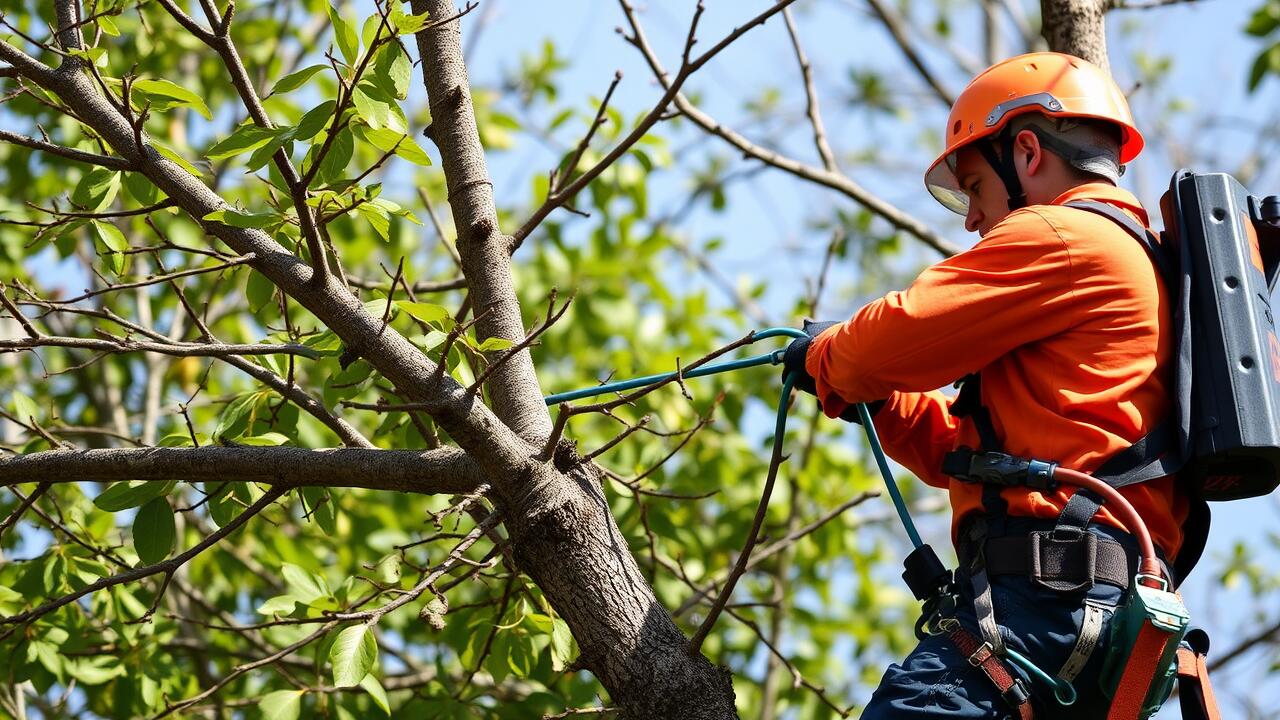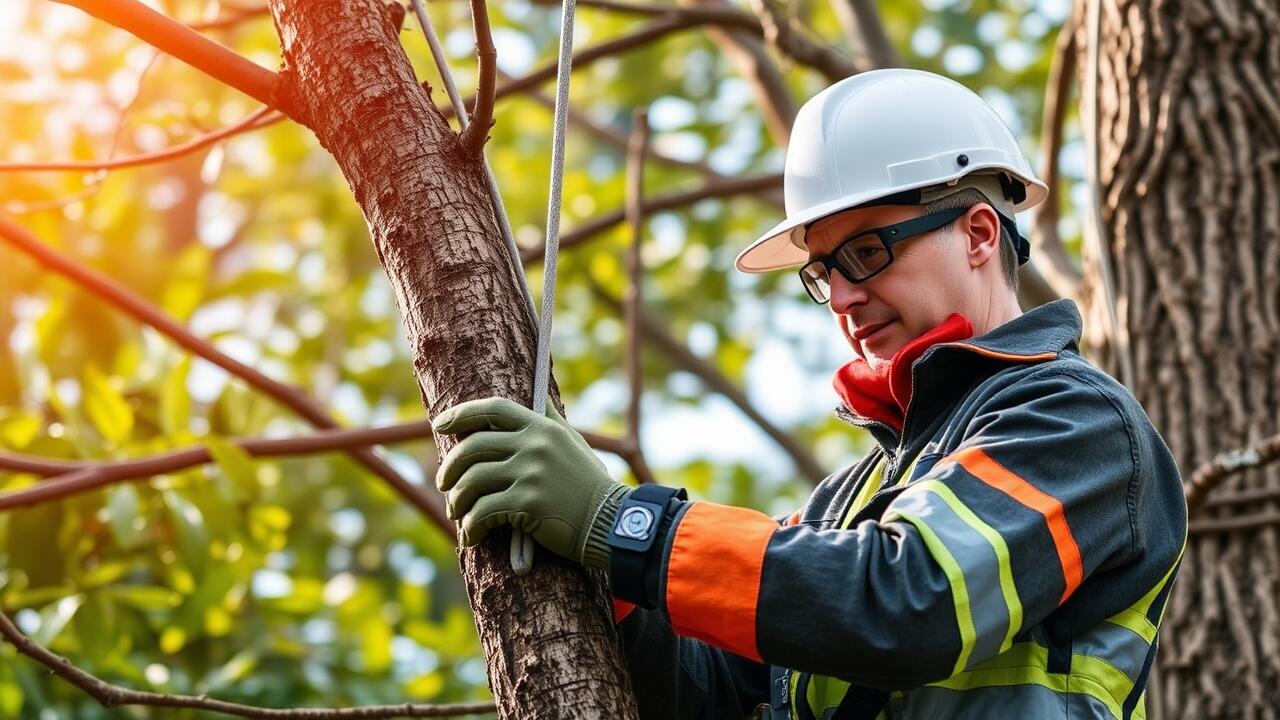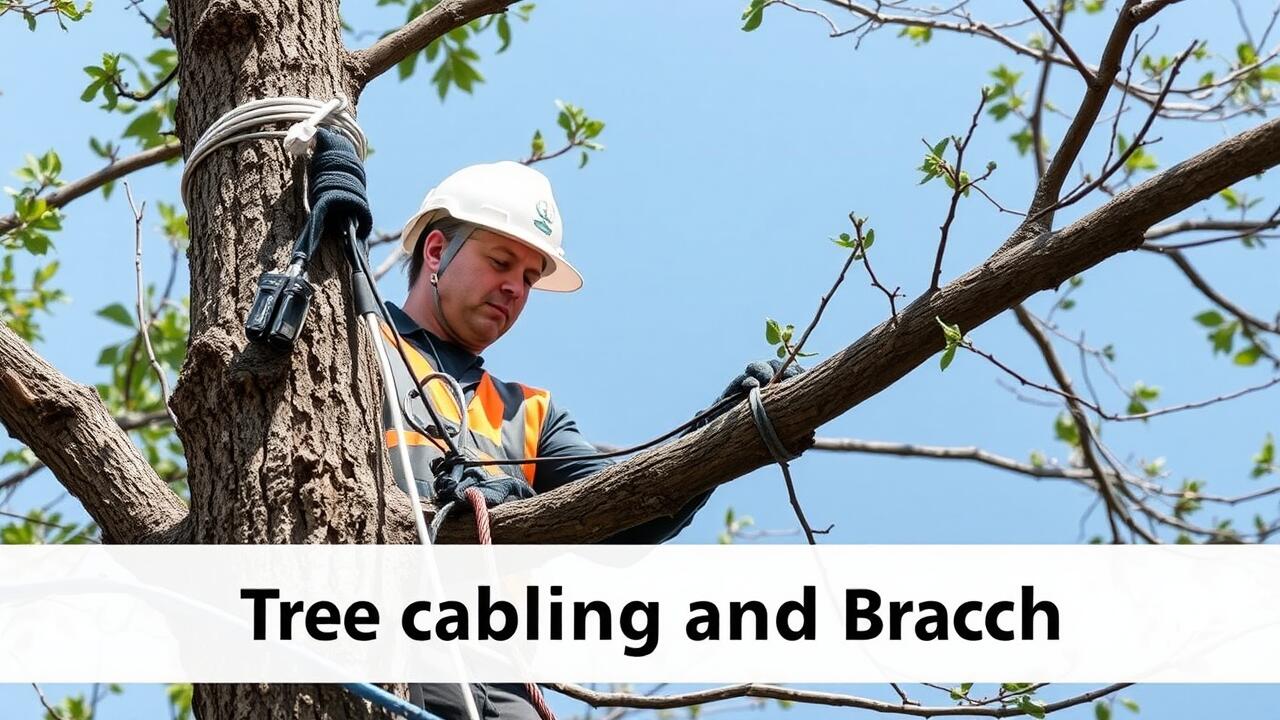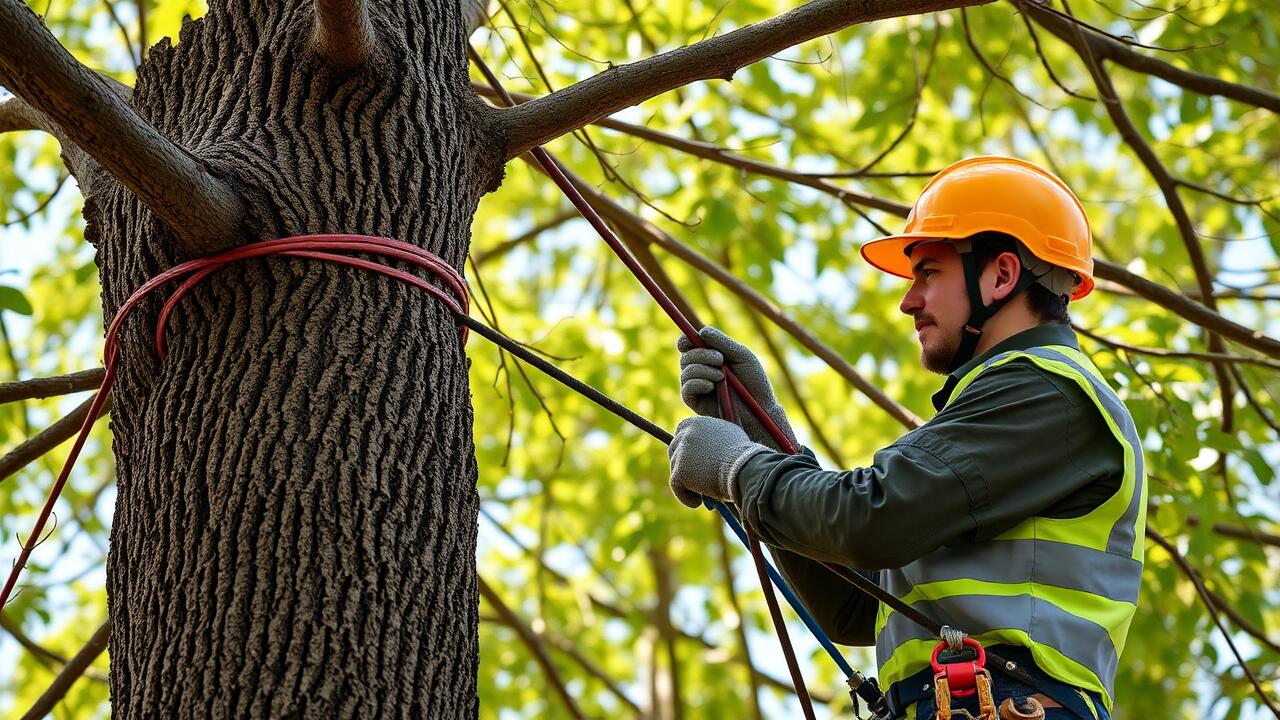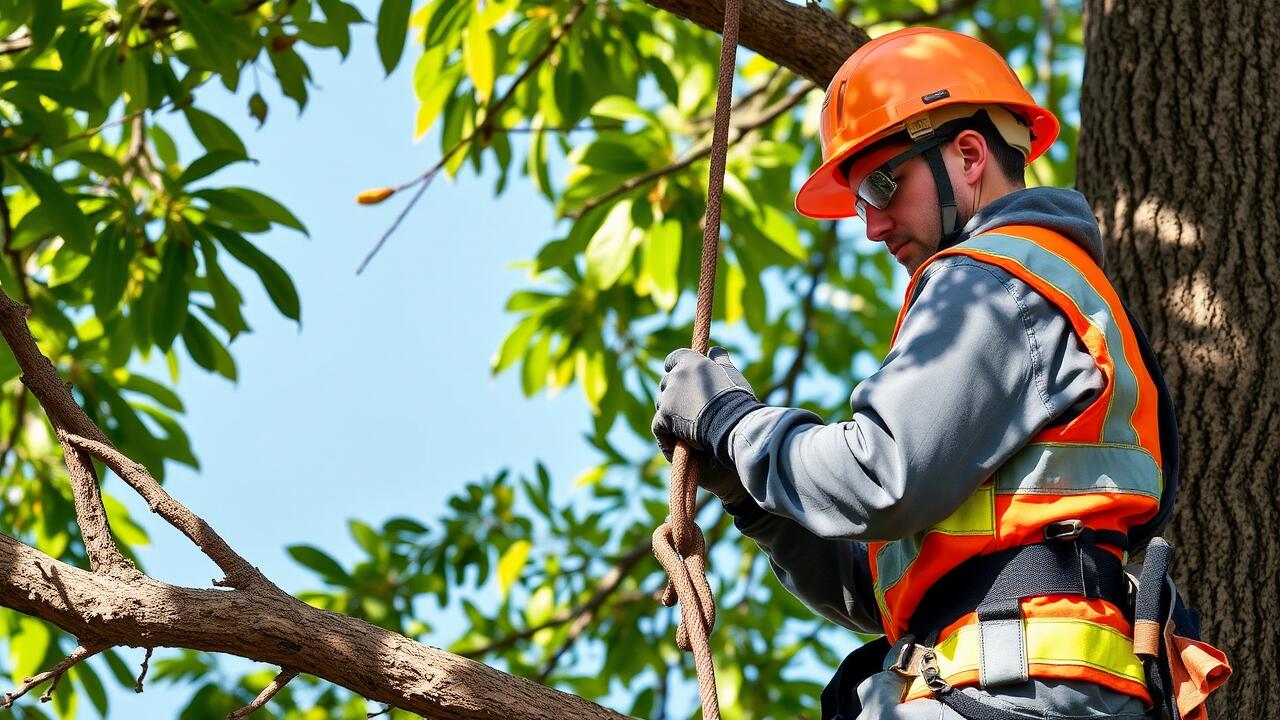
DIY Tree Bracing Materials and Costs
When considering DIY tree bracing, the materials you choose can significantly affect both effectiveness and cost. Basic supplies often include cables, braces, and anchoring devices, which can be sourced at local garden centers or online retailers. On average, the cost for quality materials can range from $50 to $200, depending on the size of the tree and the complexity of the support system required. Pre-packaged kits may also be available, offering a straightforward solution for those who prefer an all-in-one purchase.
Tree Cabling and Bracing in Kirkwood, Atlanta, can provide options tailored to specific tree species and local environmental conditions. Installing these materials properly is crucial for the longevity and stability of the tree. If you opt for professional help rather than a DIY approach, costs can escalate quickly, often reaching into the hundreds or even thousands of dollars based on the intricacy of the installation. Proper planning ensures that you select the most suitable materials while staying within your budget.
How to Source Affordable Materials
Finding affordable materials for tree bracing can involve several strategies. Local hardware stores often have deals on essential supplies. Searching online marketplaces can also yield cost-effective options, as many sellers provide competitive pricing for bulk purchases. Neighborhood exchanges or community groups may allow you to borrow or buy used equipment, reducing expenses while ensuring quality material.
In addition, consider reaching out to local tree care services. They may have recommendations for suppliers offering discounts on tree cabling and bracing necessities. Companies specializing in Tree Cabling and Bracing in Inman Park, Atlanta, can provide insights into cost-effective options. Networking with professionals can help you gather valuable information that could lower your overall costs.
Signs Your Tree May Need Bracing
Identifying when a tree may require bracing is crucial to maintaining its health and safety. Look for signs such as significant leaning, particularly if the incline is more than 15 degrees. Cracks in the trunk or large branches, as well as visible root damage, can indicate structural weakness. Trees that have lost a substantial amount of foliage or have dead branches may also benefit from assessment. Observing these issues early can help prevent further damage and ensure the tree remains stable.
In addition to visual signs, environmental factors play a significant role in determining the necessity for bracing. High winds or heavy rains can exacerbate the stress on a tree, leading to potential hazards. If you live in areas like Old Fourth Ward, Atlanta, local professionals can provide specialized services. Tree cabling and bracing in Old Fourth Ward, Atlanta, addresses these concerns and offers solutions tailored to protect your trees from environmental stressors. Regular inspections and timely intervention can prolong the life of your trees.
Identifying Structural Issues
Identifying structural issues in trees is essential for ensuring their longevity and safety. Start by examining the trunk and branching structure for any signs of cracks, splits, or areas of decay. Leaning trees often indicate root problems or imbalances that may require immediate attention. Regular assessments can help catch potential issues early, allowing for timely intervention before they escalate into more serious problems.
Another area to focus on is the crown of the tree, where limbs might become too heavy or overextended. Broken or dying branches can pose safety hazards and indicate underlying health issues. For those considering preventative measures, Tree Cabling and Bracing in Buckhead, Atlanta, can provide the necessary support to maintain tree stability. Seeking professional advice can help clarify the extent of structural problems and the best methods for resolution.
Long-term Maintenance Costs for Braced Trees
Once a tree is braced, ongoing maintenance becomes essential to ensure its stability and health. Regular inspections should be scheduled to monitor the condition of both the tree and the braces. Factors like growth patterns, environmental stressors, and wear on the equipment can all necessitate adjustments or replacements. Depending on the size and number of trees braced, the costs associated with these assessments can add up over time.
Tree Cabling and Bracing in Atlanta typically requires periodic maintenance to address any changes in the tree’s structure or surrounding environment. Professionals may advise replacing cables or braces every few years. This proactive approach not only helps maintain the structural integrity of the tree but also minimizes the risk of larger, more costly issues arising in the future. Keeping track of these expenses is crucial for homeowners looking to manage their landscaping budgets effectively.
Ongoing Care Requirements
Ongoing care for a braced tree is essential to ensure its health and stability over time. Regular inspections should be conducted to assess the condition of both the tree and the bracing system. This involves checking the straps or cables for signs of wear and ensuring that they remain securely fastened. Any changes in the tree’s growth or structure should be documented, as these factors may indicate the need for adjustments to the bracing.
In addition to visual inspections, proper watering and mulching techniques will support the tree's root system. Nutrient deficiencies can weaken its overall strength, making it more susceptible to stress or damage. For residents in need of specialized support, services like Tree Cabling and Bracing in South Downtown, Atlanta, can provide valuable expertise and assistance in managing ongoing care for braced trees. This proactive approach helps maintain the health and longevity of the tree while minimizing potential risks.
FAQS
What is the average cost of bracing a tree?
The average cost of bracing a tree typically ranges from $300 to $1,500, depending on the size of the tree and the complexity of the bracing needed.
Are there any DIY options for bracing a tree?
Yes, there are DIY options for bracing a tree, but it's essential to use the right materials and techniques to ensure the safety and stability of the tree. The costs for DIY materials can range from $50 to $200.
How can I identify if my tree needs bracing?
Signs that your tree may need bracing include visible leaning, split or cracked trunks, large, heavy branches that appear weak, or if the tree is situated in an area prone to high winds.
What ongoing maintenance costs should I expect for a braced tree?
Ongoing maintenance costs for a braced tree can include periodic inspections and adjustments, which may range from $50 to $200 annually, depending on the condition of the tree and the materials used.
Can bracing harm my tree in the long term?
If done correctly, bracing should not harm your tree. However, improper installation or materials can cause damage, so it is advisable to consult with an arborist for proper bracing methods.
